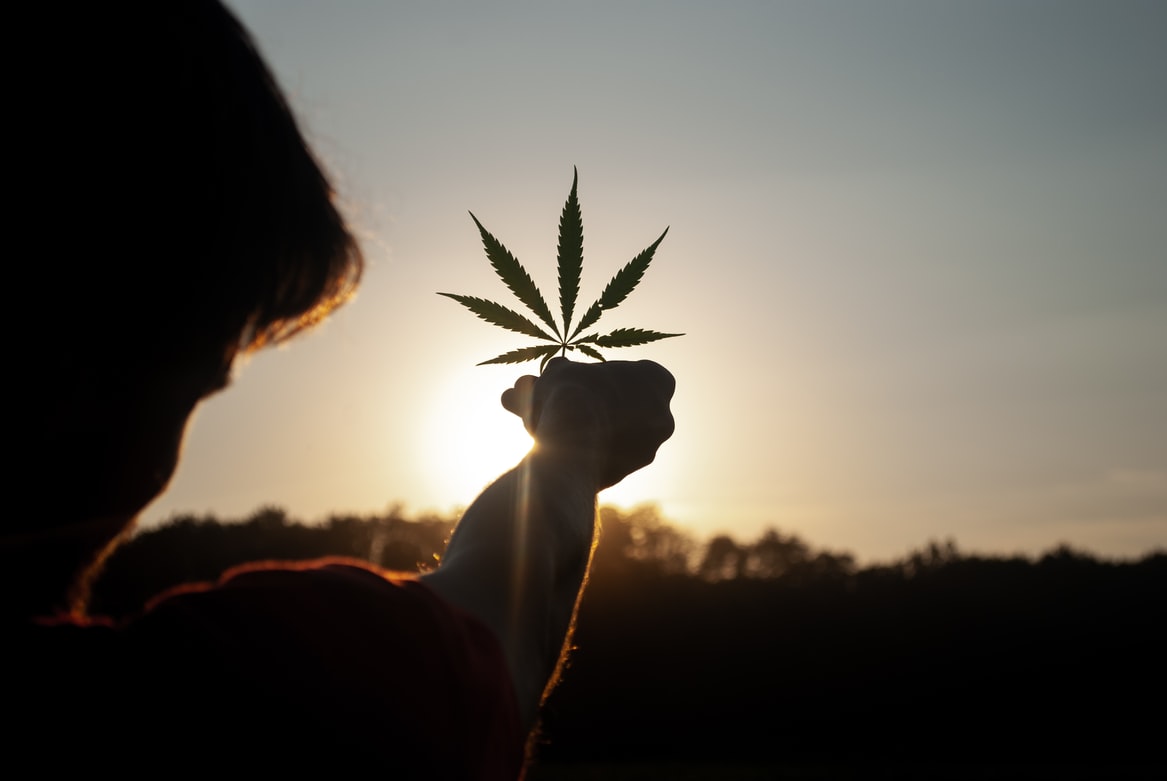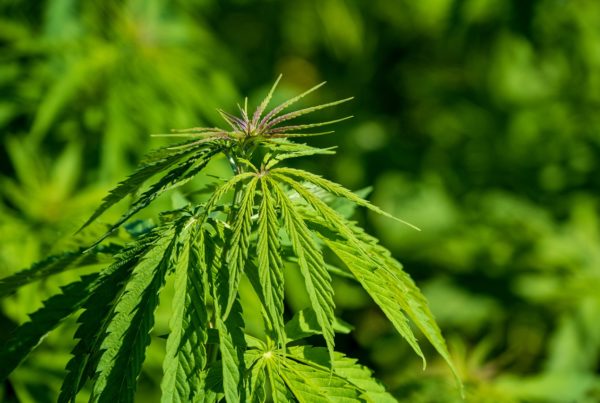Hemp could be a game changer for the environment. However, whether the game is won or lost largely depends on how hemp is grown. Dating back to around 8000 BCE, hemp cultivation has generally been associated with improvements to the soil and air. Now that much of America’s hemp cultivation takes place indoors, the modern environmental impact of hemp is mixed.
If you are a hemp grower or are thinking about starting a hemp farm, it’s important to be aware of the environmental issues surrounding hemp so that you can run a thriving, sustainable operation that doesn’t threaten our natural resources.
Positive Environmental Impact of Hemp
Hemp is often touted by activists as a solution to many of the challenges we face today. Soil quality, air quality, and the versatility of the plant are just a few of the many benefits of hemp. Here are three ways hemp is great for the environment and also great for society as a whole.
Hemp Use in Soil Remediation
It is a well-known fact that soil depletion is threatening the agricultural industry. Half of the world’s topsoil has been lost in the last 150 years alone. To reverse this trend, farmers need to adopt regenerative practices such as cover cropping, crop rotation, composting, and planting remediating agricultural crops like hemp.
There are two specific ways in which hemp can improve depleted soils. Firstly, it requires very few nutrients to thrive—meaning that it can be grown without the addition of artificial fertilizers. Secondly, hemp draws up nutrients that are found deeper in the soil through its long taproot, making these nutrients available to subsequent crops.
In areas that have suffered from deforestation or become degraded due to suboptimal agricultural practices, hemp can help to improve the structure of the soil and reduce the likelihood of soil erosion. Furthermore, hemp can be used to draw up heavy metals, making it ideal for cleaning up polluted farmland ahead of an edible crop such as lettuce.
Hemp’s Role in Sequestering Carbon
In 2017, the planet surpassed the 400ppm atmospheric carbon dioxide threshold for the first time in the history of civilization. This number (which is still rising) is putting our planet at risk for warming that passes the 3.6°F (2°C) limit set by the 2015 Paris Climate Agreement. Carbon-storing agriculture can go a long way in beginning to absorb this excess carbon.
According to Hemp Global Solutions, hemp crops can draw down as much as 1.63 tons of CO2 per ton of hemp produced, and this effect is repeated with every planting—which for hemp can be as often as four times a year.
The effectiveness of a hemp plantation for drawing carbon back into the soil depends on the cultivation techniques used. The most effective practices are those that include cover crops, rotation cropping, and the application of leftover raw material in the form of compost.
Industrial Hemp Is Amazingly Versatile
The positive environmental impact of hemp extends beyond the benefits of the growing phase to the uses of this plant after harvest. Textiles, hempcrete, biofuel, plastic, food, and cannabinoids are just some of the uses of this versatile plant.
Textiles
Concerns over the environmental impact of non-organic cotton and non-biodegradable fabrics like polyester have shone the spotlight on the potential of hemp. The fibrous stalks of hemp can be transformed into a durable fabric for everything from canvas to T-shirts. Compared to conventional cotton, hemp uses around 75% less water (thanks to the large tap root) and fewer (if any) pesticides. At the end of its life, hemp fabric biodegrades in as little as two weeks.
Hempcrete
Concrete is responsible for around 8% of the world’s carbon emissions and hempcrete offers a novel alternative. While hempcrete can’t bear a heavy load or be used underground, it can be used as an alternative filling where a wooden structure is present and emits less carbon than it sequesters during growth. As a building material, hempcrete is fire-resistant and offers excellent thermal-regulating properties.
Biofuel
Fossil fuels continue to fulfill our needs for transport, energy, plastic production, and beauty products. However, many of these needs could be met much more sustainably with hemp. The use of hemp as a biofuel was pioneered by Henry Ford in the early 20th century. This fuel is made using the seeds which are often discarded in the process of harvesting hemp stalks.
Plastic
Hemp-based plastic is a more recent invention that could go a long way towards reducing waste in landfills. In contrast to single-use plastic bags that take at least 20 years to break down, hemp plastic is completely biodegradable and doesn’t leach toxic chemicals into the soil. Some producers are beginning to sell their cannabis products in hemp plastic, solving one of the greatest problems facing the industry today.
Food
In the 1700s, George Washington encouraged everyone to grow hemp for its fiber and seeds. Hemp seeds are dense in amino acids and essential fatty acids Omega 3 and Omega 6—making them an ideal complement to a family’s diet when other sources of nutrition are scarce. Apart from eating the seeds directly, they can also be pressed to produce hemp oil and used topically on the skin and hair.
Cannabinoids
The environmental impact of hemp has been especially important since the explosion of the cannabidiol or CBD industry. In contrast to marijuana, hemp produces high levels of CBD and only trace amounts of tetrahydrocannabinol (THC), the chemical that produces a high. While only a few clinical trials are available at this stage, many CBD users claim that the substance provides multiple benefits.
Concerns About the Environmental Impact of Hemp
Organic, thoughtfully grown hemp can offer numerous benefits for people and the planet. However, new approaches to hemp cultivation paint a different picture for sustainability. Some of the concerns relate to hemp that is grown indoors, and others relate to hemp-derived waste.
Hemp Waste
In an ideal, closed-loop system, parts of the hemp plant that aren’t useful for sale or processing are turned into compost and returned to the soil. However, a lack of appropriate hemp waste management can lead to this waste going to landfills instead.
In a healthy, biodiverse compost pile, worms, heat, microorganisms, and fungi work to break down plant matter through an aerobic process that turns it into compost. In landfills, decomposing hemp waste is buried below the topsoil layer where microbes can’t survive, leading to an anaerobic process that produces methane (more than 72 times more warming than CO2 over 20 years) and isn’t able to improve the soil.
Water Usage
Hemp requires 25-30 inches of water per year to thrive, which can place a strain on local ecosystems if this moisture isn’t provided by rainfall. Outdoor hemp plantations consume more water than indoor grows where the water can be filtered and recycled. However, ensuring a healthy soil structure can help this water return underground and reduce the environmental impact of hemp.
Clandestine cannabis plantations on public and tribal lands have a particularly damaging effect when natural watercourses are diverted to irrigate the industrial crop. The best solution is to choose a site for growing hemp that receives an adequate amount of rainfall or to create a closed-loop indoor growing system where most of the irrigation water is recycled.
Energy Efficiency
When grown outdoors, hemp sequesters carbon dioxide from the air. When grown indoors, the system emits more carbon dioxide than it absorbs. Grow lights, pumps, and temperature regulators such as air conditioners generate a considerable amount of CO2. In fact, it is estimated that indoor cannabis production accounts for around 1% of carbon emissions in the United States.
Today, environmentally conscious indoor hemp growers are working to reduce their emissions by switching to more energy-efficient fixtures and using solar panels as a source of power.
Pesticides
Hemp can be grown either with or without pesticides, and the grower’s approach affects the environmental implications of hemp. The most common chemicals used in hemp farming are:
- Insecticides—to control populations of aphids and thrips
- Acaricides—to control spider mites
- Fungicides—to combat fungal diseases that occur in greenhouses and other indoor setups
Indoor crops—popular because they can be produced all year round—are more likely to contain high levels of pesticides than outdoor crops. The concentration of pesticides in the plant increases with age as the chemical is applied at regular intervals.
To grow indoor hemp organically, some growers are experimenting with organic-approved products like neem oil and citrus oil sprays. However, even if you use organic products, your wastewater will still need to be filtered before release.
Volatile Organic Compounds
Volatile organic compounds (VOCs) are released into the air by cannabis crops, thanks to the terpenes that give them their scent. These VOCs, especially when combined with nitrous oxide from traffic, can create toxic ozone at ground level and irritate local residents’ lungs.
The good news is that hemp contains much lower levels of terpenes than marijuana as it is bred for its hemp fiber, seeds, and cannabidiol content rather than its potential for recreational use. For the low level of terpenes that remains, growers can mitigate the ozone effect by planting their hemp close to other terpene-rich species like pine or in a fully enclosed indoor system with a VOC filter.
You Can Keep Hemp Production Green
As a small- or large-scale hemp grower, the environmental impact of hemp is in your hands. You can either use cultivation and recycling practices that draw down carbon and rebuild the soil or those that add to greenhouse emissions and endanger the health of people nearby.
Whether you’re an organic or conventional grower, there are several things you can do to keep your hemp-growing operation green:
- Apply for all relevant permits and licenses to ensure compliance with local laws.
- Adopt an organic approach to minimize the impact of pesticides.
- Utilize water-reducing and water-recycling technologies or plant in an area with adequate rainfall.
- Use hemp biofuel to run your machinery and hemp plastic for packaging your products.
- Compost your waste through a hemp waste management program and recycle at every stage of production.
As we take responsibility for our environmental impact, each hemp grower can play a significant role in restoring our natural ecosystems. In the end, this is what consumers want—hemp products that help to preserve the planet.






